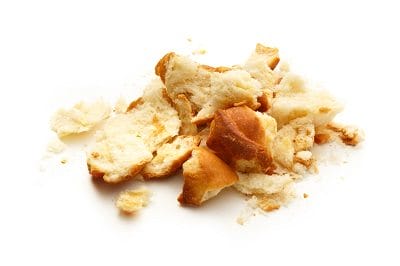How did ragweed, the dastardly king of hay fever become so potent and so widespread? Allergic Living investigates.
The ragweed in my backyard in the Ottawa Valley waves at me smugly every morning. It has formed a towering wall along the back corner of the small meadow we’ve let flourish as an environmental gesture. All the other wildflowers in the meadow co-exist happily, but the ragweed, which characteristically found a toehold in the least promising soil, has now started to elbow its way toward to the front. Unfortunately, its braggadocio is well-founded.
Not only is ragweed an aggressive competitor, it is an able procreator that produces pollen of unrivaled allergic potency. Its pollen triggers reactions in up to 75 per cent of hay fever sufferers, depending on where they live in North America, making this one weed to be reckoned with.
Operation Proliferate
The tens of millions of Americans who now suffer from ragweed allergies can thank Canada for their misery. Common ragweed’s likely point of origin in North America was the province of Ontario, according to Dr. Peter Creticos, clinical director of the Division of Allergy and Clinical Immunology at Johns Hopkins School of Medicine in Baltimore. He jokingly calls ragweed “Canada’s gift to the colonies,” referring to the plant’s ability to dump hundreds of thousand of tons of dust-like pollen across the continent every year.
Now ragweed can be found all across eastern and central Canada and the United States, though there is thankfully little of it on the west coast. The crown-shaped seeds are highly mobile and have even deployed overseas, particularly near existing and former U.S. and Canadian military bases in Western Europe.
Creticos suspects the seeds hitched a ride on equipment shipped from North America during and after the wars, then launched a horticultural offensive into Eastern Europe, where it now enjoys a strong presence. For allergy sufferers, misery loves company.
Flourishing on the Farm
Back in North America, common ragweed and its big brother, giant ragweed, are causing havoc in the crop farming sector. Clarence Swanton, a professor and weed scientist at Ontario’s University of Guelph, says ragweed grows well along roadsides and train tracks, but really loves the rich, loosely tilled soil of corn, soybean and cereal crop fields.
“Ragweed seedlings emerge early and therefore are very competitive with the crop for light, water and nutrients,” he says.
The Ontario government’s chief of weed control, Mike Cowbrough, says uncontrolled ragweed can cause yield losses of up to 80 per cent in some operations – a financial disaster for farmers. He says ragweed is one of the toughest weeds to control: it takes repeated mowings to prevent the plant from blossoming, its seeds can remain dormant for up to 50 years, and several strains have become resistant to traditional herbicides.
In the United States especially, some ragweed has even become immune to glyphosate (known in the retail sector as Roundup), once thought to be the magic bullet for weed control.
Frustrated farmers with glyphosate-resistant ragweed are creating herbicidal blends, incorporating older herbicides like 2,4-D and dicamba in hopes that their ragweed is not resistant to those mixtures. But farmers who market organic produce are in a conundrum, since herbicides are a no-no. Control often has to be done mechanically with a cultivator, which can speed soil erosion, or even manually.
Soybean farmers must also contend with ragweed’s staining quality, which can turn the pristine white soybean – and the tofu it’s used to make – to an unappealing shade of green.
Ragweed Problem Grows
Ragweed eradication seems a long way off. The United States undertook a massive program in the 1950s to get rid of the weed entirely, but the effort proved costly and ineffective. With many cities today banning pesticides and herbicides, ragweed may flourish even more widely, says Cowbrough. This, of course, is bad news for a continent full of hay fever sufferers.
Creticos explains that many consider ragweed pollen to be the most allergenic pollen around. Although a ragweed pollen grain contains about 30 different proteins, a single protein among them, called “Amb a 1,” is responsible for 95 per cent of the grain’s allergenicity. This potent protein appears to activate the immune system’s Th2-type helper T cells in an allergic person. They then cause the persistent nasal inflammation associated with chronic exposure to ragweed.
Even the shape of the pollen grain may have a role in exacerbating allergies, as it looks under a microscope like a medieval mace. The pointy protuberances allow the grain to cling to the mucous membrane while the protein triggers the allergic and often asthmatic response. In the end, however, Creticos says “we just don’t know why ragweed is such a potent allergen, but certainly Amb a 1 is the dominant allergen protein.”
Vaccine on Hold for Now
Creticos and his colleagues developed a new ragweed vaccine, called AIC, which they reported on in the New England Journal of Medicine in 2006. By chemically attaching a synthetic DNA sequence to the potent Amb a 1 protein, they mobilized a whole new sector of the immune system’s allergic suppression arsenal.
The vaccine was meant to be effective for at least two years and require only six weekly injections, rather than the standard four to six years of allergy shots. Unfortunately, clinical development of the vaccine has been rocky. The pharmaceutical manufacturer began clinical trials on the vaccine but then discontinued development.
However, Creticos remains optimistic the original vaccine concept will prove fruitful. In the meantime, millions of ragweed sufferers will look to other treatment options – or just accept the smirking weed’s reputation as an unrivaled misery-maker.
© Copyright AGW Media Inc.
Related Reading:
- All About Ragweed: Symptoms, Avoidance and Treatment
- Sneeze-free Garden – create the perfect low-allergen garden.
- Hay Fever Handbook – all you’ll need to cope.
- Trees that Make You Sneeze
- Stinging Insect Allergies – when is it a serious reaction?





